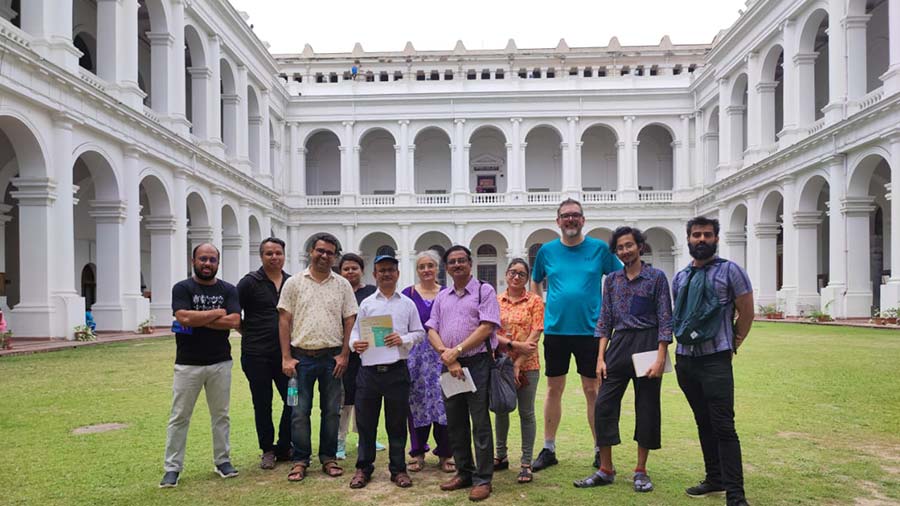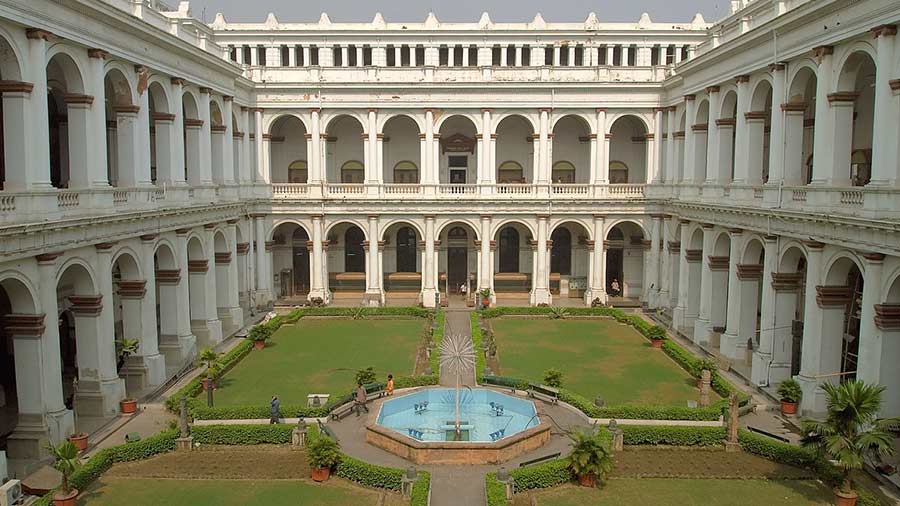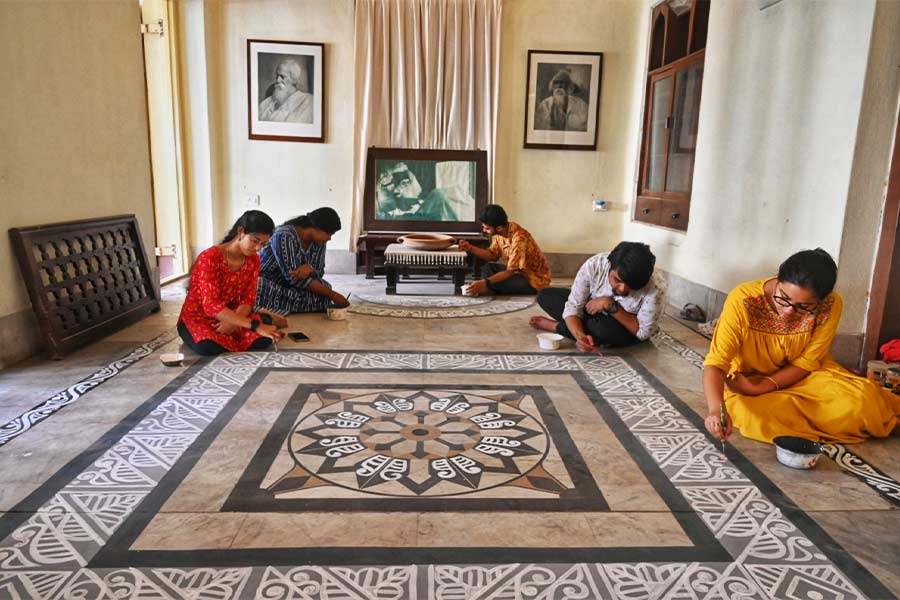Many of us may not be aware that the International Council of Museums (ICOM) has been organising May 18 as International Museum Day since 1977. In 2023, more than 37,000 museums participated in the event in about 158 countries and territories.
I was happy to get an Invitation from the Centre for Museum – a shared vision of Cultre, a creative and cultural enterprise and Indica, an institute dedicated to Indic knowledge tradition that wanted to conduct a heritage walk at the Indian Museum on May 18 this year, in collaboration with our social media initiative Break Free Trails, jointly operated by heritage enthusiast Shaikh Sohail and yours truly. We offered to conduct a walking tour inside the Bharhut Gallery and the Archaeological Gallery. On International Museum Day, 10 participants gathered inside the Indian Museum on Chowringhee Road.
Sohail introduced us to the participants and gave a brief introduction of the formation of the Indian Museum. Sir William Jones, a profound philologist with the intention of establishing a society for the Asiatic studies, founded the Asiatic Society in 1784 in Kolkata, which moved to its own premises in the year 1808 on Park Street.

East Gateway and Railings of Bharhut Stupa
Photo: Wikimedia Commons, Biswarup GangulyDr Nathanial Wallich, a Danish botanist, who was involved in the early development of the Calcutta Botanical Garden, strongly advocated the society to form a Museum. Under his guidance as an honorary curator, a museum was established on February 2, 1814, at the Asiatic Society, which stayed there until 1878. The foundation of the present museum building on Chowringhee Road was laid in 1867. In 1875 the present building was completed, which earlier housed the Sadar Diwani Adalat, from which the adjacent road got its name as Sudder Street.
I started the tour of the museum with the lion capital of Rampurva, which stands on the corridor near the Bharhut Gallery. That, along with a bull capital, was discovered at Rampurva, located in the West Champaran district of Bihar in 1876 by A. C. L. Carlleyle. Close to it stands the sculpture of the Wish fulfilling Tree or Kalpavriksha made of red sandstone, dated 2nd Century BCE, discovered at Besnagar, Madhya Pradesh.
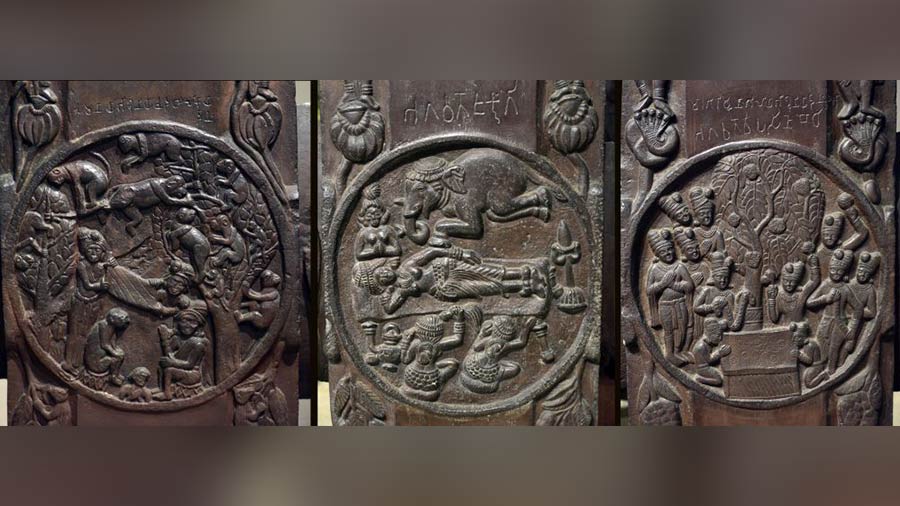
Iconography from Jataka and Buddha's life with Brahmi text description on top on Railings of Bharhut Stupa
Near the entrance of the gallery are four figures. One is that of red sandstone Yakshi or demigoddess dated 2nd Century BCE discovered also in Besnagar and presented by The Maharaja of Scindia in 1885 to the museum. Just beside it stands a sandstone Yaksha or demigod dating between 3rd to 2nd centuries discovered from Patna, Bihar. On each side of the entrance to Bharhut Galley stands two combinations of Yaksha and Yakshi standing side by side.
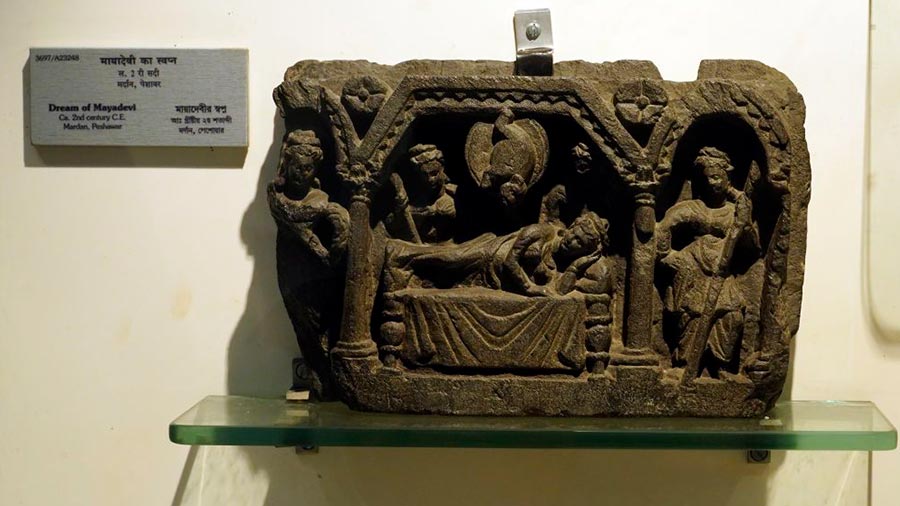
Dream of Buddha's mother Mayadevi, who dreamt of a white elephant before the Buddha's birth, in Gandhar Gallery
I explained to our guests how Alexander Cunningham visited Bharhut in Madhya Pradesh in 1873 and discovered the remains of a demolished Buddhist stupa. The next year, he excavated the site. Joseph David Beglar, Cunningham's assistant, continued the excavation. There were four gates to the stupa of which one gate and some railings were brought to the Indian Museum and reassembled. These ancient remains were sent to Calcutta by train after building a dedicated railway station at the village of Lagargawan close to Bharhut.
It is believed by many historians that the Maurya king Ashoka built the Bharhut stupa in the 3rd century BCE, but the gateway and railings were built during the Shunga period. The most interesting part is the iconography accompanied by descriptions written in Brahmi on the red sandstone railings which look like wooden constructions. I explained meticulously the icons, which depicted scenes from Jataka and different incidents of Buddha’s life. The left pillar of the Toran or gate has a detailed inscription in Brahmi, which says that the gate, with its ornamental stonework and plinth, was made by King Vatsiputra Dhanabhuti, a 2nd or 1st-century BCE Buddhist king either from the Shunga Empire or from Srughna in Haryana.
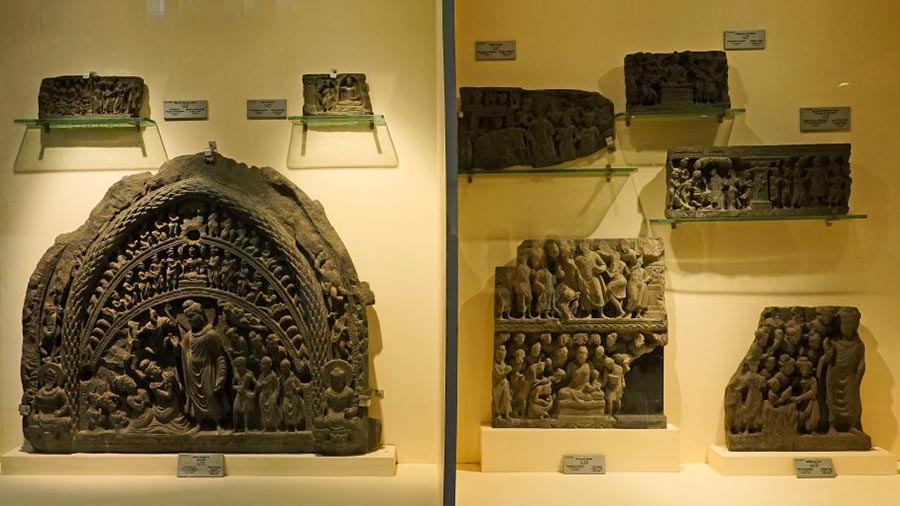
In Gandhar gallery, one can observe the noted influence of the Greco-Roman culture on the artifacts
We moved to the Gandhara Gallery, which houses artifacts dating between 1st Century BCE to 4th century CE which are classic examples of the Gandhara school of art, a region located in north-western corner of the Indo-Pak subcontinent and Eastern Afghanistan. I explained to the visitors significant events of Lord Buddha’s life depicted in the sculptures there and noted the influence of the Greco-Roman culture on the art form.
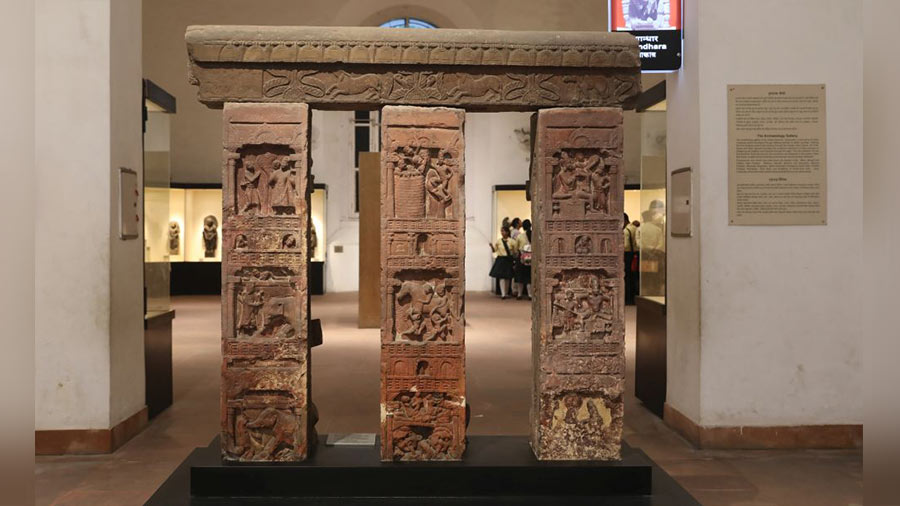
Three pillars of red sandstone showing scenes from Shibi Jataka and other tales (2nd century) at Bhuteshwar, Mathura in Uttar Pradesh
Moving to the archaeological gallery, I started with the Mathura school of sculptures. The significant art forms found in the Mathura region dated mainly during the Kushan dynasty. The magnificent pillars with Yakshi, Bacchanalian scenes and huge statues of Buddha were a treat to watch for the visitors.
Next, we moved to the Bhumara Gallery where fragments from Bhumara Temple are displayed. This was a 5th or 6th-century Gupta era Hindu stone temple site dedicated to Shiva near Satna in Madhya Pradesh, which had a “Garbha Griha” and “Pradakshina Patha”.
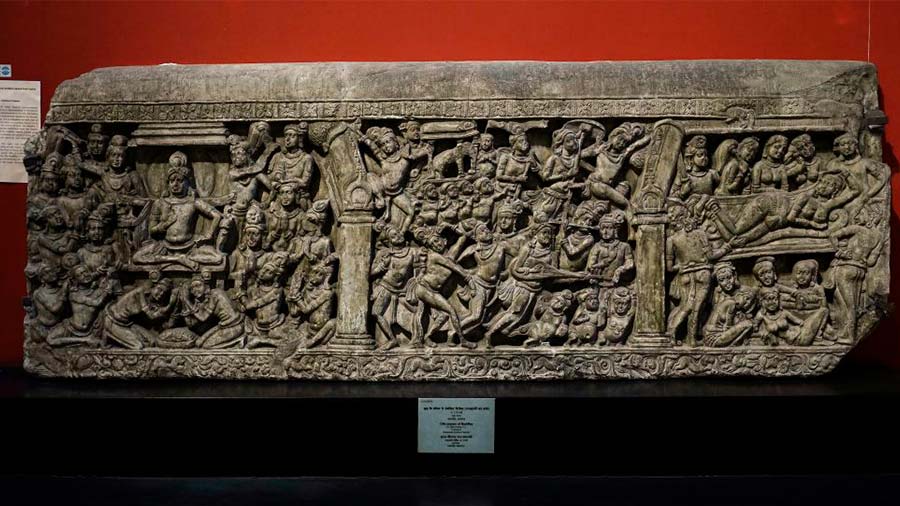
A fragment of Amaravati stupa made of limestone depicts various events of Buddha's earlier life
The visitors were enthralled to see the fragments of Amaravati stupa (2nd to 5th century) made of limestone discovered in 1797 by Major Colin Mackenzie. The art of Amaravati is considered as one of the three major styles or schools of ancient Indian art, after the Mathura style and the Gandharan style.
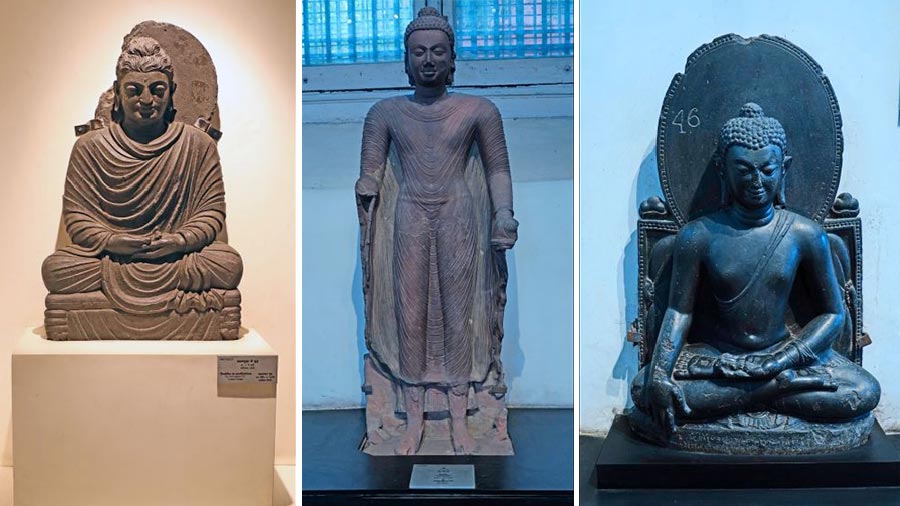
Statue of Buddha from different period and places - (L to R): Loriyan Tangai (2nd century), Mathura (3rd century) and Bihar (7th century)
I guided the visitors to the Gallery of Gupta School of arts from Mathura and Sarnath, which is considered the classic peak and golden age of North Indian art. I pointed out the subtle expression in the statues of Buddha and other sculptures.
In the gallery of medieval Bihar and Bengal, sculptures made of basaltic stone, taken from Rajmahal hills, were a treat to watch. The pick of the sculpture was the intricately carved statue of Khadiravani Tara dated to the 10th century obtained from Bihar.
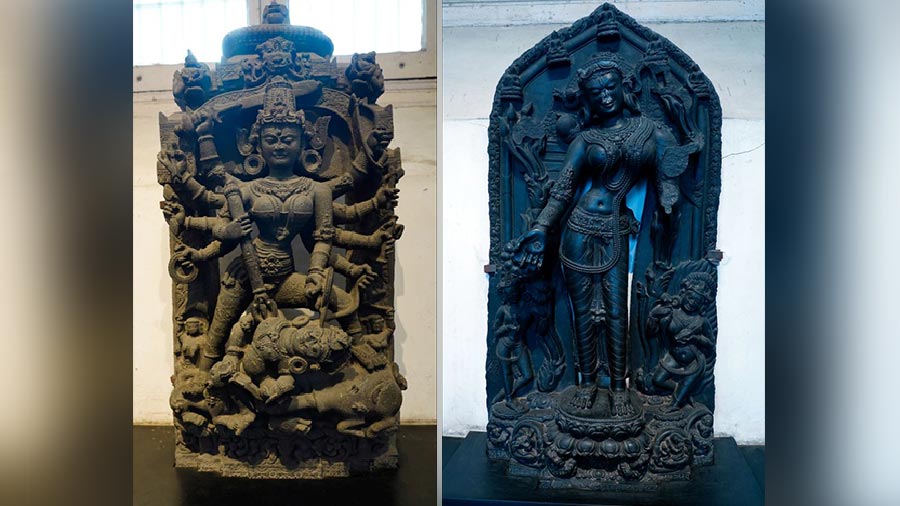
(L-R) Mahisasuramardini (12th century) made of chlorite and Manbhum Khadiravani Tara (10th century) made of basalt in Bihar
In the section of Post Gupta period sculptures, the visitors were most amazed to see the colossal chlorite statue of Mahishasura Mardini Durga obtained from Manbhum (Purulia region) of West Bengal dating to the 12th century.
After explaining how to identify each of the Jain Tirthankar from their unique signs in the Jain Gallery, the tour came to an end after visiting the Southeast Asian sculpture Gallery.
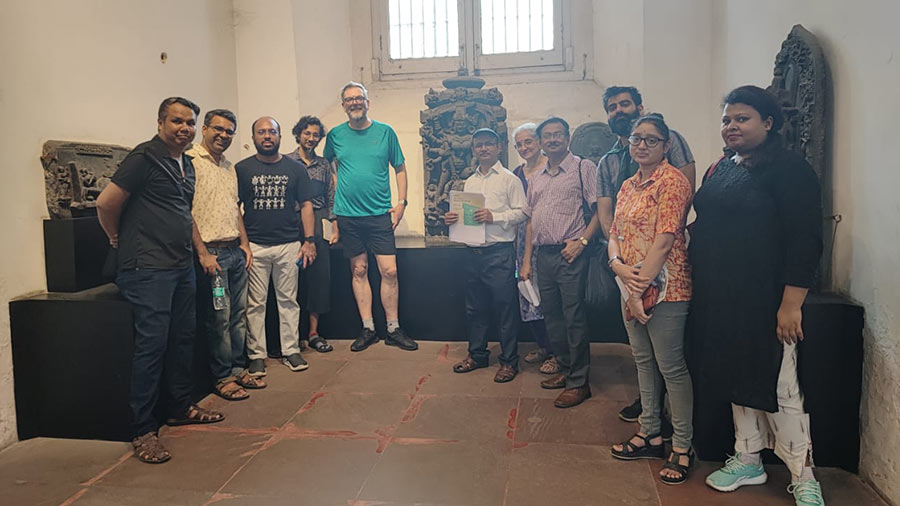
Members of walking tours inside archaeological gallery of the Indian Museum
Sumit SuraiChris Stevenson, a Software Engineer in Apple, hailing from San Francisco, said that it was a “great tour”, which “made the exhibits much more interesting”.
Priyanka Singha, a teacher by profession, thanked us for translating the Brahmi scripts. Sukti Sarkar, a heritage enthusiast, said, “It was a time travel through bygone centuries.” Sumit Surai , an IT professional said, “Since knowledgeable guides are scarce at the museum, such initiatives should be taken more often.”


